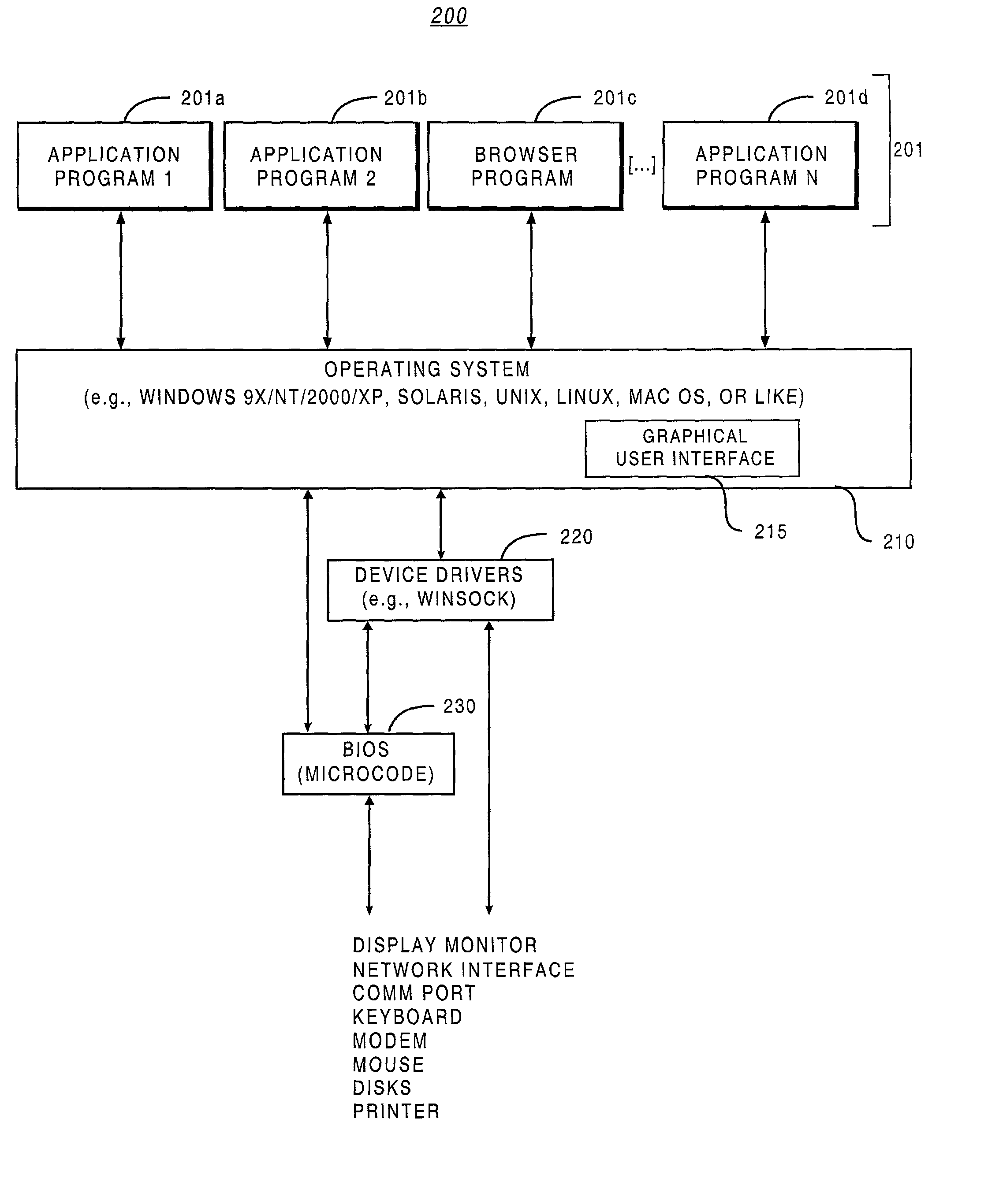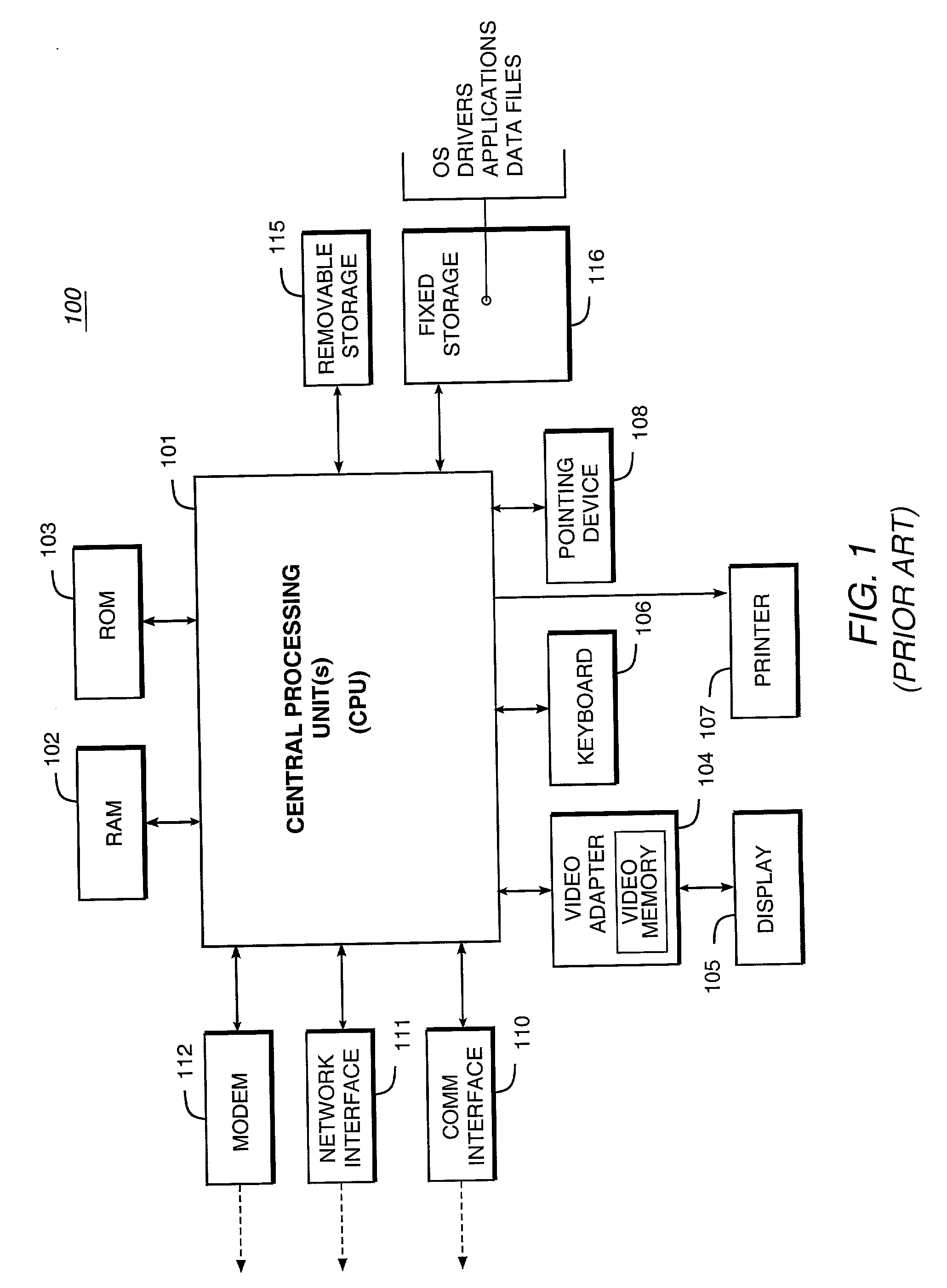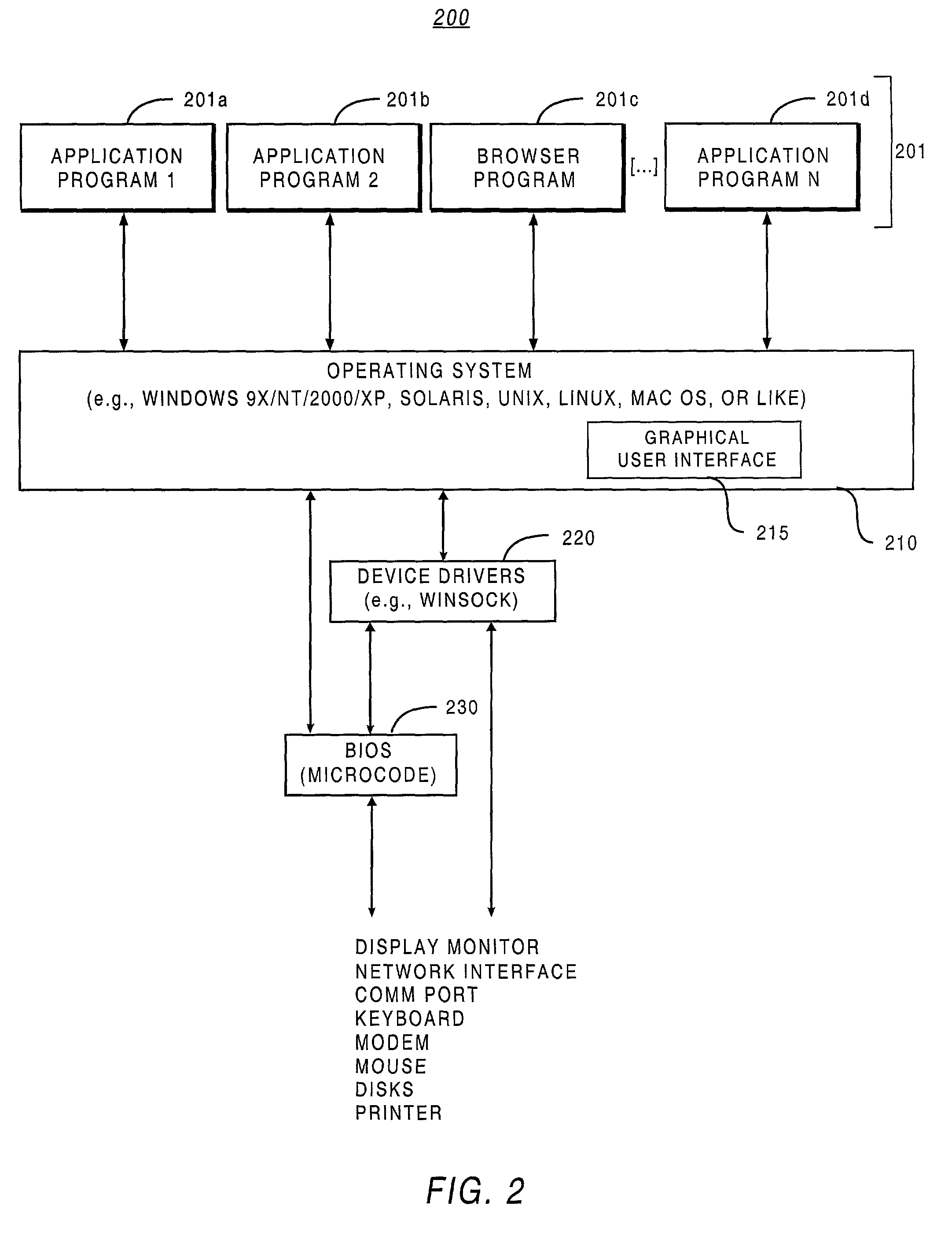Relational database system providing XML query support
a relational database and xml query technology, applied in the field of information processing environments, can solve the problems of large documents and catalogs, large amount of information, and inability to format xml data,
- Summary
- Abstract
- Description
- Claims
- Application Information
AI Technical Summary
Benefits of technology
Problems solved by technology
Method used
Image
Examples
example 3
[0136]
4 - - - - - - - - - - - - - - - - - - - - - - - - - - -- - - - - SCAN OPERATION on / bookstore / book PROJECTION in 2 - - - - - - - - - - - - - - - - - - - - - - - - - - - - - - - -
[0137] This operation scans the set of nodes (OIDs) for path " / bookstore / book". For every call to next ( ), it picks the next value in the set of nodes and puts it into the assigned slot (#2) in the results context array.
[0138] The COMPARISON operation gets the left hand side SearchContext one at a time and compares it with the literal "Joe". The literal "Joe" signifies the right hand side of the comparison. If the comparison is successful, the left hand side SearchContext is put into the allocated result slot (#5) as shown below in Example 4.
example 4
[0139]
5 - - - - - - - - - - - - - - - - - - - - - - - - - - - - -- - - COMPARISION OPERATION with != RHS is Joe LH in 4 PROJECTION in 5 - - - - - - - - - - - - - - - - - -- - - - - - - - - - SCAN OPERATION on / bookstore / book / author / firs-t-name PROJECTION in 4
[0140] The SCAN operator scans all the nodes for the path " / bookstore / book / author / first-name" and stores them in the assigned result slot (#4). The right hand side is an invariant "Joe." For every next ( ) call to COMPARISON, a call is made to next ( ) of SCAN and then a comparison is made with "Joe." If the comparison is successful, slot (#4) is copied to slot (#5). If the comparison is not successful, then it calls next ( ) from SCAN.
[0141] The GROUPING operator is a specialized operator, which understands the notion of hierarchy. The GROUPING operator encapsulates the ability to group children with their parents as shown below in Example 5.
example 5
[0142]
6 - - - - - - - - - - - - - - - - - - - - - - - - - - -- - - - GROUPING OPERATION PRIMARY in 8 SECONDARY in 9 LH Result in 2 RH Result in 7 - - - - - - -- - - - - - - - - - - - - - - - - - - - - SCAN OPERATION on / bookstore / book PROJECTION in 2 - - - - - - - - - - - - -- - - - - - - - - - - - - - - SCAN OPERATION on / bookstore / book / title PROJECTION in 7
[0143] The SCAN operator on left hand side of GROUPING scans all the nodes for the path " / bookstore / book." For every call to its next ( ) method, the SCAN operator on the left hand side places a node into slot (#2). The SCAN operator on the right hand side of GROUPING scans all the nodes for the path " / bookstore / book / title." For every call to its next ( ) method, the SCAN operator on the right hand side places a node into slot (#7).
[0144] When the next ( ) method of the GROUPING operator is called, it calls the next for the left hand side and puts the results in internal slots. Then, the grouping operator calls the next ( ) meth...
PUM
 Login to View More
Login to View More Abstract
Description
Claims
Application Information
 Login to View More
Login to View More - R&D
- Intellectual Property
- Life Sciences
- Materials
- Tech Scout
- Unparalleled Data Quality
- Higher Quality Content
- 60% Fewer Hallucinations
Browse by: Latest US Patents, China's latest patents, Technical Efficacy Thesaurus, Application Domain, Technology Topic, Popular Technical Reports.
© 2025 PatSnap. All rights reserved.Legal|Privacy policy|Modern Slavery Act Transparency Statement|Sitemap|About US| Contact US: help@patsnap.com



